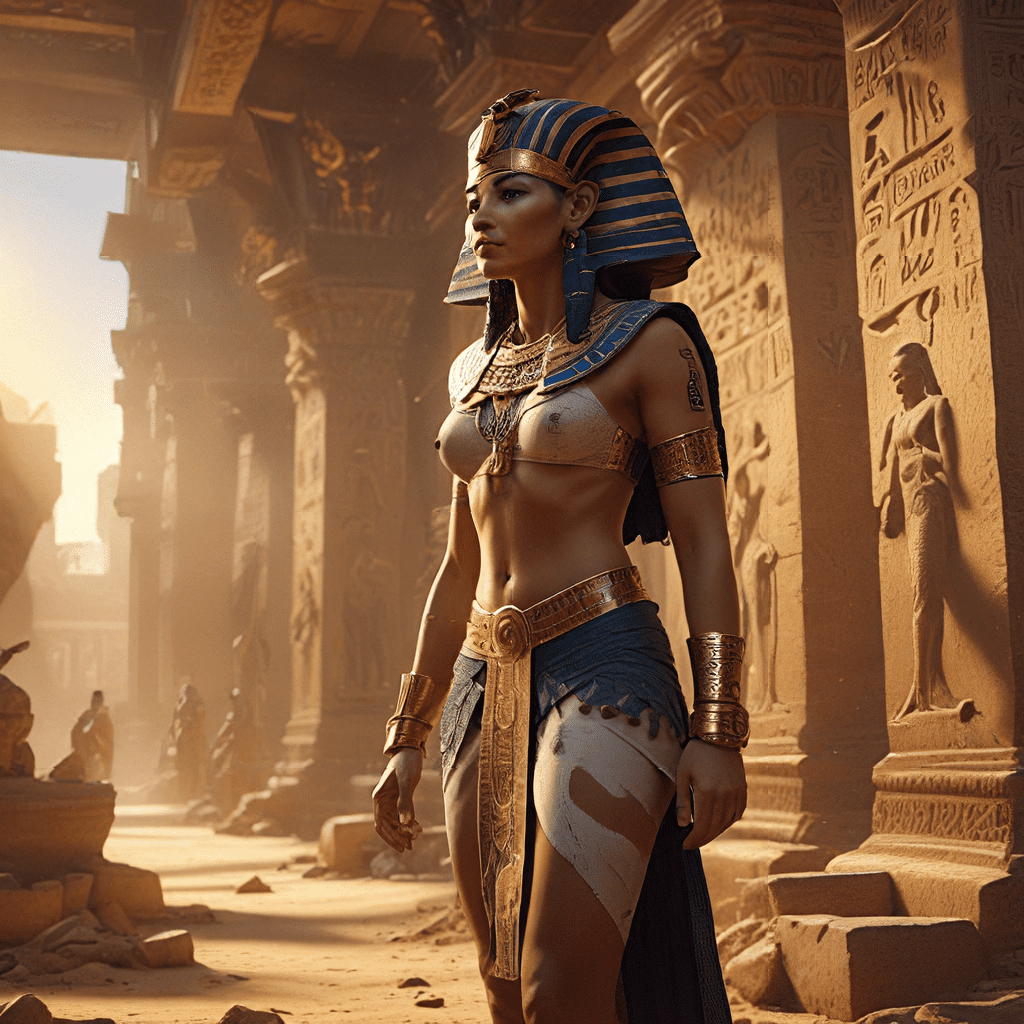The Creation Myths of Ancient Egypt: A Journey Through the Origins of the World
In the heart of ancient Egypt, where the Nile River flowed like a lifeline, myths and legends whispered tales of the world’s origin. These creation stories weren’t just stories; they were the foundation of Egyptian beliefs, rituals, and daily life. They explained the mysteries of existence, offered guidance for the living, and provided a roadmap for the afterlife.
1. Introduction: The Power of Myth in Ancient Egypt
For the ancient Egyptians, understanding their origins was paramount. Creation myths provided a framework for understanding the cosmos, the natural world, and their place within it. These stories outlined the roles of the gods, the principles of order and justice, and the cyclical nature of life and death.
Each creation story served as a powerful tool for shaping Egyptian society, inspiring awe for the divine and promoting a sense of belonging within a grand cosmic narrative.
2. The Ogdoad: The Primordial Waters of Nun
The Ogdoad myth, originating from the city of Hermopolis, paints a picture of the world’s beginning as a vast, primordial ocean called Nun. This boundless sea represented chaos, the raw potential for creation. Out of Nun emerged the Ogdoad, eight primordial deities representing the fundamental forces of creation.
These deities, known for their amphibian forms, embodied the dualities of creation: male and female, light and darkness, dryness and wetness. They represented the chaotic yet fertile state of the world before order emerged. Their presence hinted at the underlying principle of balance essential to the universe.
3. The Heliopolitan Cosmology: The Rise of Atum
The Heliopolitan creation myth, from the city of Heliopolis, focuses on the self-created god Atum. Emerging from the primeval waters, Atum was the sole being in existence. He uttered his own name, bringing himself into being. This act of self-creation represents the power of the divine and the force that set the universe in motion.
Through a process of self-generation, Atum gave rise to Shu, the god of air, and Tefnut, the goddess of moisture. Shu and Tefnut then created Geb, the earth god, and Nut, the sky goddess. This lineage forms the foundation of the Heliopolitan Ennead, a group of nine major deities who governed the creation and maintenance of the cosmos.
4. The Memphite Cosmology: Ptah, the Architect of the World
The city of Memphis held its own creation myth, centering on Ptah, the god of creation and craftsmanship. Ptah’s role went beyond mere creation; he was the architect of the world, using his divine intellect and skill to shape the universe. This idea is reflected in the iconic image of Ptah holding the ankh, the symbol of life, and the was scepter, symbolizing power and authority.
Ptah’s influence extended beyond the realm of creation; he was also believed to inspire the skills of artisans and craftspeople. This connection highlights the importance of craftsmanship in Egyptian society and the belief that all creation, whether divine or human, stemmed from Ptah’s creative force.
5. The Hermopolitan Cosmology: The Eight “Great Ones”
The Hermopolitan creation myth, centered on the Ogdoad, offered a unique perspective on the birth of the world. The Ogdoad embodies the concept of duality, representing both the masculine and feminine principles essential for creation. These “Great Ones” were not merely separate entities but aspects of a single, unified force, demonstrating the inherent interconnectedness of the universe.
This myth presents a vision of creation not as a simple act of separation but as a process of constant interaction and balance between opposing forces. The Ogdoad embodies the idea that creation is an ongoing process, a constant dance between order and chaos, light and darkness.
6. The Ennead: The Divine Family of Heliopolis
The Heliopolitan myth expanded beyond Atum, incorporating a divine family known as the Ennead. This group of nine deities, including Atum, Shu, Tefnut, Geb, Nut, Osiris, Isis, Seth, and Nephthys, represented the key aspects of creation and cosmic order. Their roles, relationships, and conflicts provided a framework for understanding the complexities of the divine and the challenges inherent in maintaining balance in the universe.
The Ennead’s relationship with the Ogdoad reflects the ongoing interplay between chaos and order, suggesting that the universe is a constant process of creation, destruction, and renewal. The myth also emphasizes the importance of family and lineage in understanding the divine and the interconnectedness of all things.
7. The Role of Ma’at: Order and Justice in Creation
Central to the Egyptian creation myths is the concept of Ma’at, the embodiment of cosmic order, justice, and balance. Ma’at represents the principles that govern the universe, ensuring harmony and stability. She is often depicted as a woman wearing a feather, symbolizing truth and righteousness.
The ancient Egyptians believed that Ma’at was the foundation of their world, upholding the laws of nature and ensuring the smooth functioning of the cosmos. Her presence permeates all aspects of Egyptian life, from the pharaoh’s rule to the everyday actions of ordinary people. Ma’at’s influence served to unite the Egyptians in a shared purpose, striving for order, justice, and balance in all things.
8. The Significance of the Sun God: Ra and the Cosmos
The sun god Ra, often associated with Atum, holds a central position in the Egyptian creation myths. Ra was believed to have emerged from the primordial waters, creating the world with his divine power. His daily journey across the sky represented the cycle of life, death, and rebirth, mirroring the constant ebb and flow of the universe.
Ra’s significance extended beyond creation; his power brought light and warmth to the world, providing life-giving energy. The Egyptians revered Ra as the ultimate source of creation, the divine force that sustained the cosmos and ensured its continued existence. His presence in the myths underscores the importance of the sun in Egyptian life and its role in sustaining the natural world.




